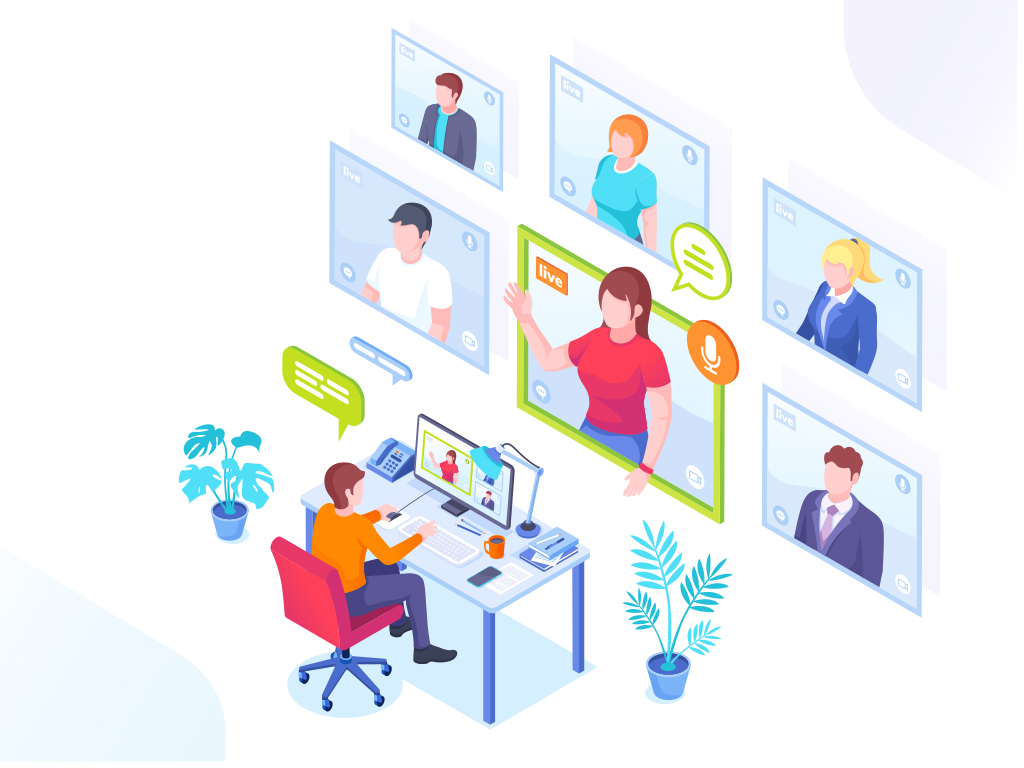Ever since the COVID-19 pandemic started, it not only changed the way we live and work but also the way we function. While we keep talking about how work practices need to change to accommodate the new system and increase productivity, no one is talking about the elephant in the room! The lifestyle changes that COVID-19 brought us has been deeply impacting mental health, especially of working professionals, doing their daily grind, while being locked up at home.
A recent survey by the Indian Psychiatric Society revealed that even during the first phase of the lockdown, there has been a whopping 20% rise in mental health concerns among employed professionals.
Mental Health: The current scenario
The culture of working from home, across almost all enterprises is relatively a new practice, especially for the Indian workforce. For those used to traveling daily, being on the field, meeting people, engaging in constant interaction, the sudden shift to sitting at one place for hours is not mentally stimulating. Most employees are working remotely for the first time, isolated from their coworkers and colleagues, missing the daily conversations and interactions that stimulate the mind. Among them, many are away from their friends and families, making it more difficult.
Initially, it started out as a novel idea to work from the comfort of your personal space, but soon, saturation hit and started affecting people psychologically. This current work set-up has particularly compounded the issues for people with pre-existing psychological conditions. Our daily routines, as we knew, are now completely disrupted, blurring the lines of work and life; personal time and space is not personal anymore, as work continues to overrule almost the entire day. One might want to blame the work culture but the fact is, even organizations are struggling to get attuned to this new way of working.
In times of such uncertainty and crisis, it is normal for anxiety and stress to take over. With rising work pressure and a monotonous routine and environment, it is bound to cause burnout, meltdowns, resulting in demotivation and low productivity. It has become imperative for employers to ensure the mental health and wellbeing of their employees to create a cooperative, productive, and enjoyable work environment.
The solution
While it might be difficult for organizations to understand the state of mind of their employees, there are a few simple ways to restore and boost their mental health.
Encourage open conversations
If work processes are changing, so should the approach. If you had a vertical hierarchy earlier with specified levels of communication, maybe it’s time to change that and go all linear and horizontal. Encourage open conversations where everyone in a team/group feels included and brave enough to put forth their opinions. At the same time, encourage people to talk about their state of mind, how they feel about a certain decision and if they are undergoing a serious or persistent mental issue, then take it up and address individually.
Create awareness
Since this is a relatively new culture for many employers, it is important to create awareness about mental health among employees. This needs to start at the top and trickle down to the bottom line. Once leaders become candid about their mental health and initiate conversations, it will encourage others to follow suit and build a platform of healthy, transparent talks and how everyone can help each other. Welcome solutions from personal experiences or suggest professional help.
Initiate stress-busting activities
The agenda of Zoom meetings and team calls might be to discuss the day’s task and weekly plans, but they can be made fun and lighter. While you talk about work, you can also set aside five minutes and talk about the day and find out how the team members are doing in their individual spaces. Encourage them to eat healthily and exercise regularly, perhaps cite a few interesting blogs/videos to read up about food and fitness, talk about your workout routines. Also actively encourage short coffee/tea breaks and have a group call at lunch hour to make it feel like a regular office lunchtime.
Social distancing does not mean social isolation
Although people are away from each other, they can still stay connected and feel included in each other’s lives. And only when we still have the human touch (though virtually now) we feel mentally healthy and alive, helping us live and work efficiently.
While meeting deadlines and completing projects are priorities, none of that can happen and successfully without the workforce being in a good physical and mental condition. So, talk about and deal with the mental health of your employees and make WFH an encouraging one!
- Embracing Agility and Inclusion: The Power of a Skills-First Approach in Talent Management - August 14, 2023
- How to Reduce Time to Proficiency and Measure Onboarding Effectiveness - August 10, 2023
- Unleashing the Power of AI: Transforming Learning and Development in Your Organization - August 1, 2023

